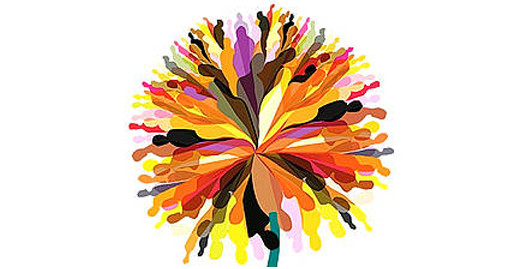
May 12, 2019
Traditional thoughts about leaders tend to reflect the leader as a single person out in front creating a clear path and vision. The effectiveness of “the organizational leader” depends on accomplishing goals and moving the organization forward. Recently while having lunch, I saw this view and thought, “Wow! What a great visualization of what leadership looks like.” I whipped out my cell phone and took the picture. Here you have it, Leadership as a solo artist.

However, after reading the article, “Corporate tribes: The heart of effective leadership” by Dave Logan, John King, and Halee Fischer-Wright, I began to think about leadership in a refreshing new way. These authors maintain that,
“A leader without a tribe isn’t a leader, and the tribe is the context in which leadership happens.”
I agree with the assessment in this article. How can anyone who maintains that they are a leader get anything done without the action of others?
Over the evolution of some leadership theories, leadership has been connected to the group in some shape, form, or fashion. At the heart of leadership there is always a discussion of human behavior. Today’s leadership models tend to focus on transnational leadership culture where leaders in organizations deal with being globally diverse. Leveraging technology and conducting virtual meetings are quickly becoming a norm. Organizations require leaders who can implement flatter decentralized structures to keep pace with shifts in the economic landscape. Thinking through these characteristics leads to a realization that no single person can make things happen without a team.

I challenge you to consider that the idea of the solo leader is outdated and that a better picture of leadership is within the context of leveraging their internal and external networks. I mean the effective of tomorrow is going to work through and with others to move the tribe forward. A better visual for leading with and through others appears next. Looking closely at this picture the scene of a system of inter-locking parts appears. Everything works in harmony together and today’s leader must be able to work through people to achieve action within the organization.
To the question of harmony, why does any leader need to work harmoniously within their tribe? Check out this quick read, “4 Principles of Achieving Harmony for Busy Leaders” by Jeff Pruitt. This article has four perspectives on ways to achieve balance and harmony as a leader. Here is one quote, among many, from Jeff’s column that I find appropriate for this topic:
We’re taught to hone harmonious alignment within our organizational goals, vision, values, and purpose to ensure everyone working on the team is pulling in the same direction, however, it’s also essential to attain congruity in life and inspire our teams to do the same.
From the paradigm of harmony among tribe members, the effective leader increases the odds of getting more work done through and by others. For example, research suggests that when people feel valued and are treated fairly, they tend to reciprocate and create higher quality products. This may not be a newsflash for many leaders but what is interesting is the fact that just because a leader knows this does not necessarily correlate to leadership actions that demonstrate fair treatment and valuing employees. Here’s one tip I use in my leadership style, I practice supportive communication. This style of communication encourages feedback, gives clear and attainable directions, and promotes others increasing their collaboration with others. Here are a few suggestions from a recent article on supportive communication.
- Ask for feedback AND incorporate what that information into your leadership style.
- Listen fully before you execute your leadership plans. Listening does not diminish your power but really ensures you have a fresh perspective on things.
- Host workshops or at the very least, routinely give opening remarks at workshops demonstrating your leadership support. Remember the adage, “People remember only 20% of what they read but 80% of what they hear.”
- Practice politeness. Kind words and gestures go a long way toward motivating your tribe to give 110% not just when others are looking but all the time. People remember how you make them feel.
- Encourage cross collaboration between inspiring leaders and other managers in your sphere of leadership. Your goal is to get the members of the tribe to force multiply your goals and vision.
The final thought on leadership comes from the late Steve Jobs,
“It’s not the tools you have faith in. Tools are just tools — they work, or they don’t work. It’s the people you have faith in or not. –Steve Jobs
Leadership is a privilege and honor creating an opportunity to use human ingenuity to move the organization’s goals forward all while demonstrating that a harmonious workplace can be a highly effective workplace. The traditional model of a solo superhero leader doesn’t work well in a global society because the leader can’t be in several places at one time. However, members of the team are dispersed and will execute the vision if given an opportunity to experience caring leadership. By the way, please share your comments to this perspective.



